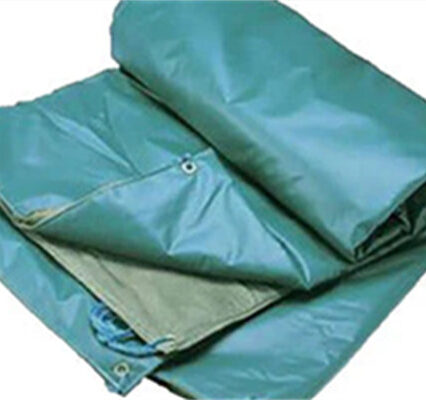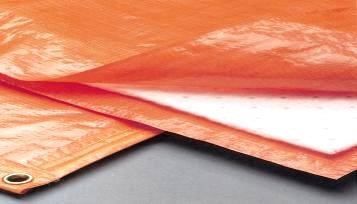
In the realm of outdoor gear and construction materials, the term insulated tarp goes far beyond the ordinary blue or silver tarps we associate with temporary shelters or cargo covers. Today, insulated construction tarps represent a significant leap forward in functionality and versatility. They cater to a wide range of needs—from extreme weather protection in camping to energy-efficient practices in construction sites. Let’s explore what insulated tarps are, their unique features, and why they should be your go-to choice for outdoor projects.

I. Definition and Fundamentals
Insulating tarps are high-performance, multi-layered tarpaulin sheets designed to provide enhanced insulation. Unlike traditional tarps made solely from polyethylene or PVC, an insulated tarpaulin incorporates additional layers of insulating material such as foam, bubble wrap, or reflective film. This innovative construction not only improves durability but also enhances their ability to retain heat, block cold, and regulate temperature fluctuations—making them excellent insulation tarps for both outdoor and industrial use.
II. Key Features and Benefits
1. Temperature Regulation:
An insulated construction tarp is ideal for winter construction sites, cold-weather camping, or as an insulated tarp for tent setups. It helps regulate temperature and retain warmth effectively.
2. Moisture Resistance:
Many insulated tarps are waterproof, ensuring your workspace or camping gear stays dry even in harsh conditions.
3. Durata:
Heavy-duty materials and reinforced seams make insulated tarpaulins capable of withstanding wind, snow, or strong UV rays.
4. Lightweight and Portable:
Despite their advanced build, insulated tarps for camping remain lightweight and easy to carry, perfect for hikers, campers, or contractors.
5. Versatilità:
Whether used as an insulating tarp for livestock barns, a temporary roof cover, or even as soundproofing in construction, their applications are diverse.
III. Applications Across Industries
1. Outdoor Recreation:
Campers and hikers use insulated tarps for camping to create warm, dry shelters, protect equipment, or build makeshift kitchens in cold weather.
2. Construction and Renovation:
Builders rely on insulated construction tarps to shield unfinished structures, protect against frost, and provide temporary insulation during roofing or siding projects.
3. Agriculture:
Farmers use insulated tarpaulins to regulate greenhouse temperatures, protect livestock barns, and prevent frost damage to crops.
4. Emergency Response:
Relief teams deploy insulated tarps as shelters, storage units, or medical stations in disaster areas.
5. Event Management:
Event planners turn to insulation tarps for controlled environments at outdoor concerts, festivals, and exhibitions.
IV. Choosing the Right Insulated Tarp
When buying an insulated tarp, consider:
1. Composizione del materiale:
Look for tarps with high-quality insulation materials that suit your specific needs (e.g., foam core for maximum insulation, reflective film for heat retention).
2. Dimensioni e forma:
From small insulated tarps for camping to large insulated construction tarps, match the tarp to your project.
3. Durability and Weight:
Balance the need for durability with portability. Heavier tarps may offer better insulation but may be harder to transport.
4. Resistenza agli agenti atmosferici:
Choose a tarp that can withstand the expected weather conditions, including waterproofness, UV resistance, and wind resistance.
5. Ease of Setup and Storage:
Look for tarps with reinforced grommets or ties for easy setup and compact storage options for transport.
V. Maintaining and Storing Insulated Tarps
Proper maintenance and storage can extend the lifespan of your insulated tarp. Here are some tips:
1. Clean Regularly:
Mild soap and water are enough to clean your insulating tarp.
2. Inspect for Damage:
Regularly check for tears, punctures, or wear and tear, and repair as needed to prevent further damage.
3. Store Correctly:
Store your insulated tarps in a cool, dry place, away from direct sunlight and extreme temperatures. Folding or rolling them up tightly can help prevent creases and wrinkles.
4. Avoid Heavy Objects:
Avoid stacking heavy items on top of your tarp, as this can compress the insulation layers and reduce their effectiveness.
Conclusione
From insulated construction tarps on job sites to insulated tarps for camping adventures, these multi-layered covers deliver unmatched durability, weather protection, and temperature control. Whether you need an insulated tarp for tent use, agricultural storage, or industrial applications, choosing the right insulated tarpaulin ensures reliability and efficiency.
Next time you face harsh outdoor conditions, consider the benefits of a high-quality insulated tarp—your ultimate solution for warmth, durability, and versatility.
